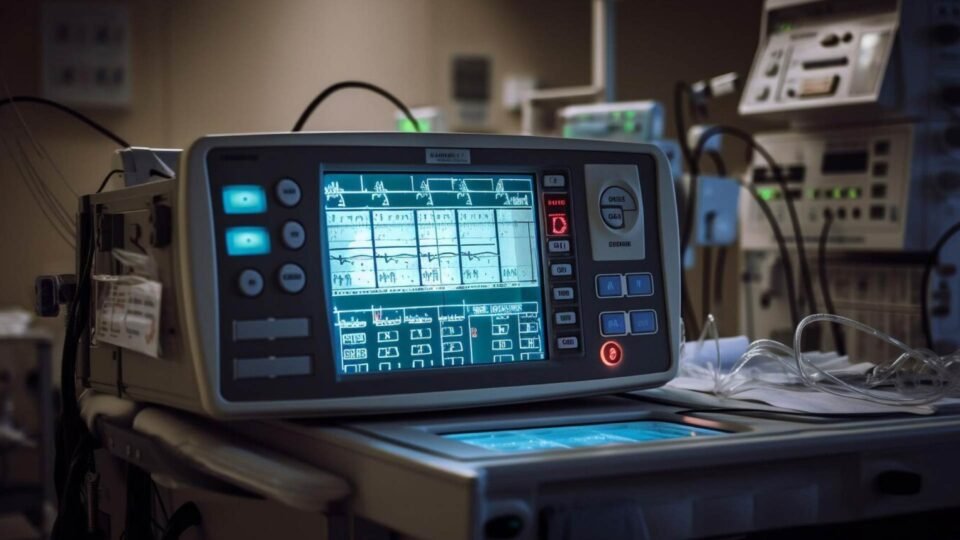The intelligent telehealth edge devices support multiple audio and video streams at the bedside, enabling providers to deploy advanced hybrid care delivery models at scale.
In a significant leap forward for inpatient care, Caregility is proud to introduce a new class of adaptive telehealth edge devices designed to seamlessly support hybrid care models that bring remote clinicians and artificial intelligence (AI) capabilities into bedside workflows at the point of care.
The groundbreaking APS200 Duo is the company’s first dual-camera, all-in-one system with onboard edge computing and a powerful dedicated graphics engine. The APS200 Duo includes a wide-angle camera for remote patient observation and a high-definition 40x power zoom camera for virtual nursing programs and remote patient examinations.
The second-generation APS100 Pro is a reimagined all-in-one system with a wide-angle camera for remote patient observation. The versatile APS100 Pro can be expanded with the APS FlexCam, an external high-definition 40x power zoom video camera for virtual nursing programs and remote patient examinations. The APS100 Pro and APS FlexCam feature flexible wiring options, including Power-Over-Ethernet (PoE+) support.
These advanced telehealth edge devices, specifically built for inpatient settings, not only offer superior audio and video capabilities but also open new avenues for hybrid healthcare delivery, offsetting clinical staffing shortages and enhancing patient monitoring with AI-driven insights. The devices integrate with the award-winning Caregility Cloud™ virtual care platform to enable a multitude of clinical applications. Multiple audio and video streams from each telehealth endpoint can support concurrent clinical workflows such as continuous remote patient observation and ad hoc specialty consultations.
The AI-enhanced telehealth edge devices facilitate seamless virtual clinical interactions, enhancing the efficiency and quality of patient care and clinical team collaboration. The dual-camera configurations allow for virtual encounters and AI-supported continuous patient monitoring to be conducted in tandem, helping healthcare professionals detect and alert staff to unattended patient movement and vital sign changes that could lead to adverse events so care teams can intervene faster. Advanced microphone arrays and high-quality speakers provide realistic encounters and support acoustic listening AI applications such as ambient documentation for automated, structured EMR reports.
The APS200 Duo, APS100 Pro, and APS FlexCam represent a significant advancement in hospital-based telehealth, offering a new level of support to patients and acting as a workforce multiplier for healthcare providers. Key highlights include:
- Built-in edge computing and Wi-Fi, Ethernet, Bluetooth®, USB, and HDMI-CEC connectivity allow for easy AI and peripherals integrations.
- Dual HD cameras provide 1080p resolution, ensuring clear and detailed visual interactions.
- 40x power zoom and a 5x wide-angle field of view support AI feeds as well as interactive patient encounters like virtual nursing and virtual observation.
- Night vision supports viewing in dark settings without disturbing the patient.
- High-quality microphone arrays enable clear communication in noisy clinical environments.
- Seamless integration with EMRs, Clinical Decision Support (CDS) platforms, connected devices, and more.
The FDA-registered Class 1 medical devices can integrate with digital TVs and Interactive Patient Console (IPC) systems in the patient room to maximize space and resources. The Caregility telehealth edge devices also include a wall-mounted vLert button that interfaces with the Caregility Clinical Notifications application, allowing bedside staff to initiate an on-demand session with a virtual nurse or remote clinician. Every Caregility device is self-healing, proactively monitored, and remotely managed to ensure reliability and minimize disruption to patient care.
Early market adopters are using APS200 Duo, APS100 Pro, and APS FlexCam devices to cost-effectively scale AI-enabled telehealth to every patient room.
OhioHealth recently installed 66 APS100 Pro telehealth devices as part of its Patient Room of the Future initiative at the health system’s new Pickerington Methodist Hospital. “From ordering meals to watching educational videos and managing medication schedules, the intuitive technology aims to provide a more personalized hospital stay,” said Tom Gutman, OhioHealth Senior Consultant of Learning Simulation. “The addition of a camera above the TV allows patients to speak virtually with nurses, specialists, or family members. The positive impact is evident to both staff and patients alike.”
UMass Memorial Health recently launched a similar initiative. “We plan to install the APS200 in our new 72-bed inpatient facility – our “hospital of the future” – for a variety of different use cases including e-sitting, virtual rounding, patient-family communication, and even tele-ICU level care,” said David Smith, UMass Memorial Health System Associate VP of Virtual Medicine. “The combination of form factor and advanced PTZ camera control is a sweet spot for the APS200. We wanted to be an early adopter after seeing the prototype and competitive price point. We envision this to be a standard of care for every bed across our healthcare system.”
“Our mission at Caregility is to continuously elevate the art of what’s possible in care delivery to improve the experience for both patients and providers,” said Bin Guan, Caregility Chief Innovation Officer. “Our latest telehealth edge devices offer healthcare organizations an effective way to extend hybrid care at scale – every room, every bed, every patient – so we can deliver the most effective, high-quality care possible.”

